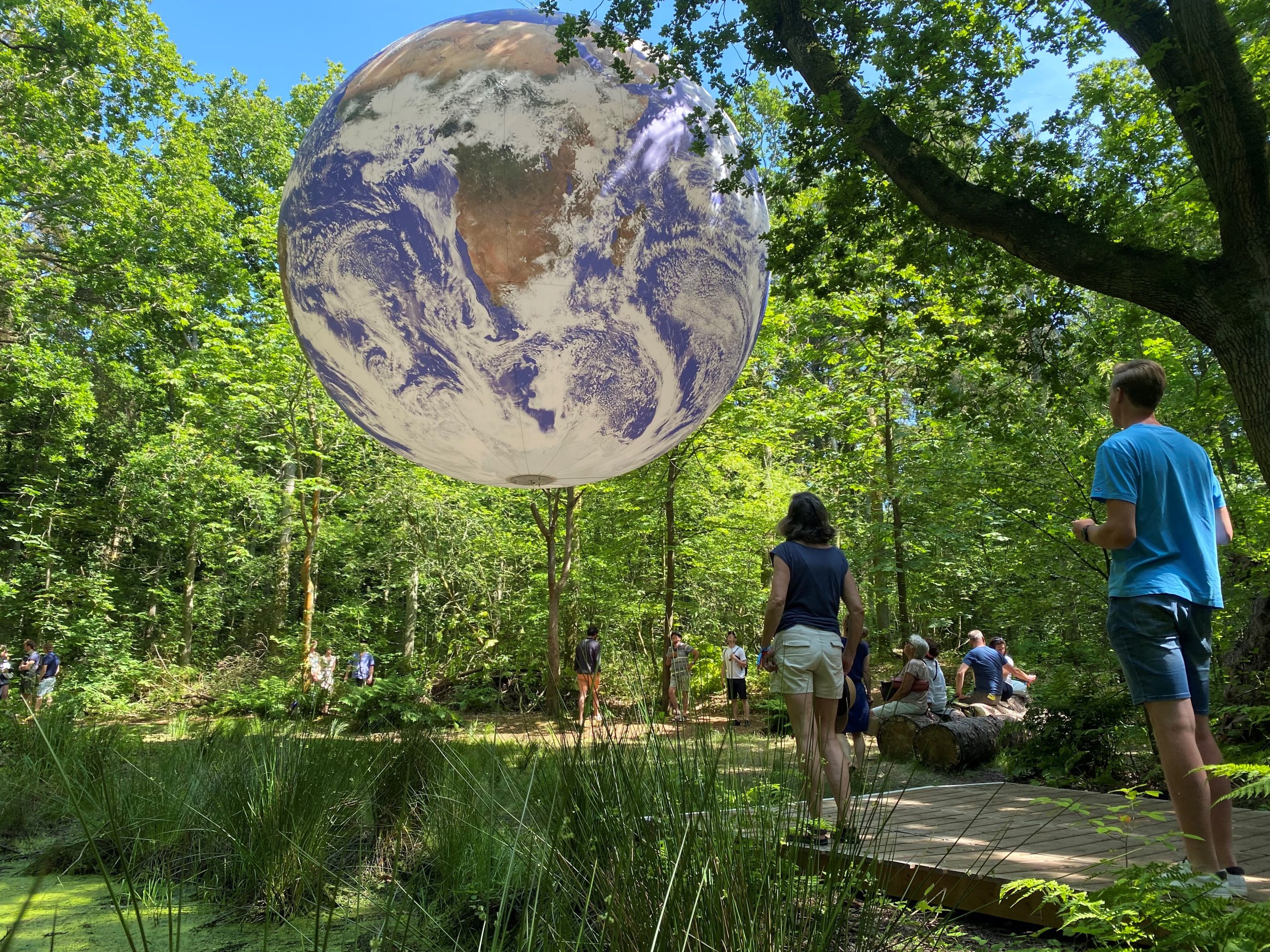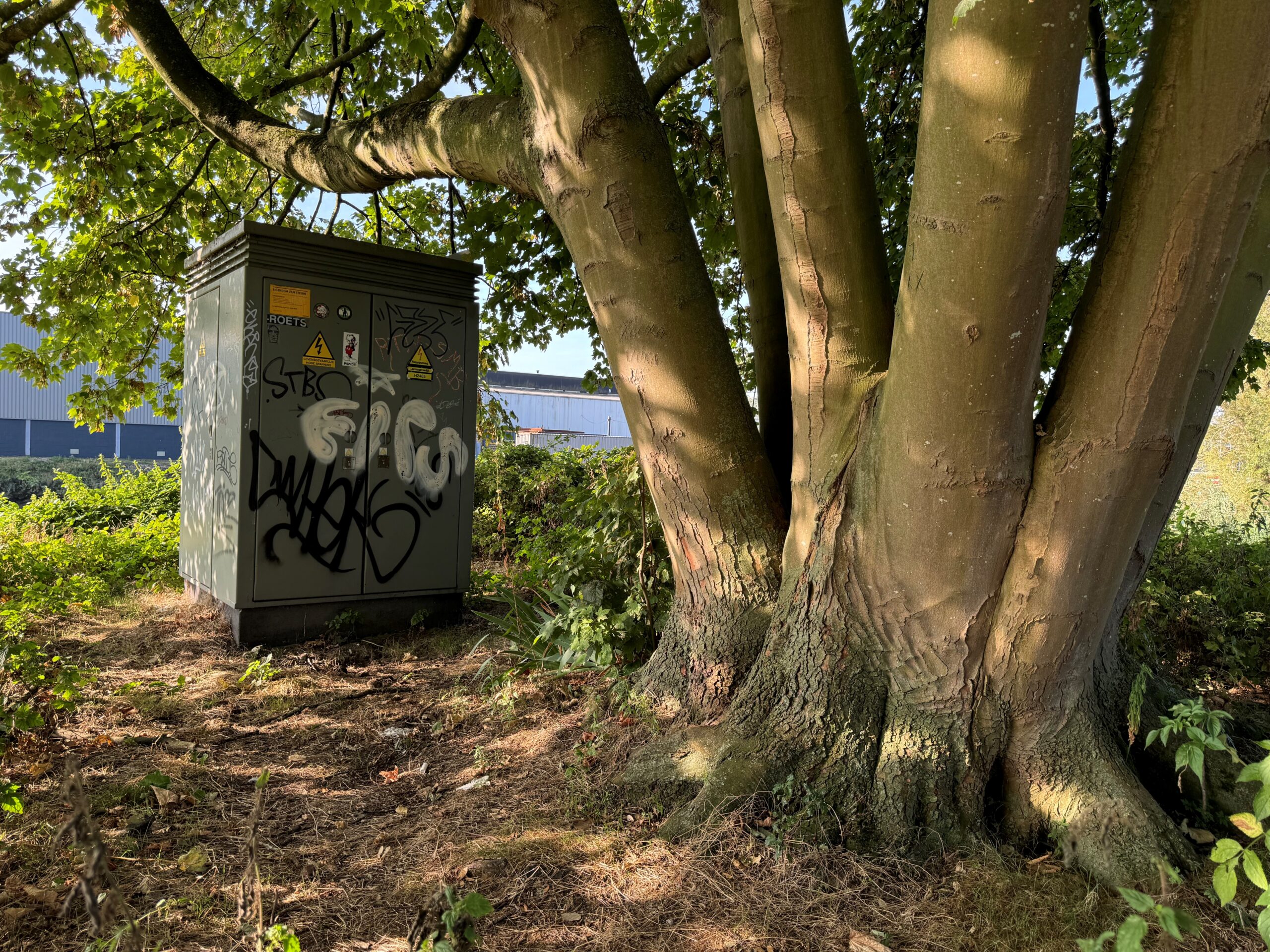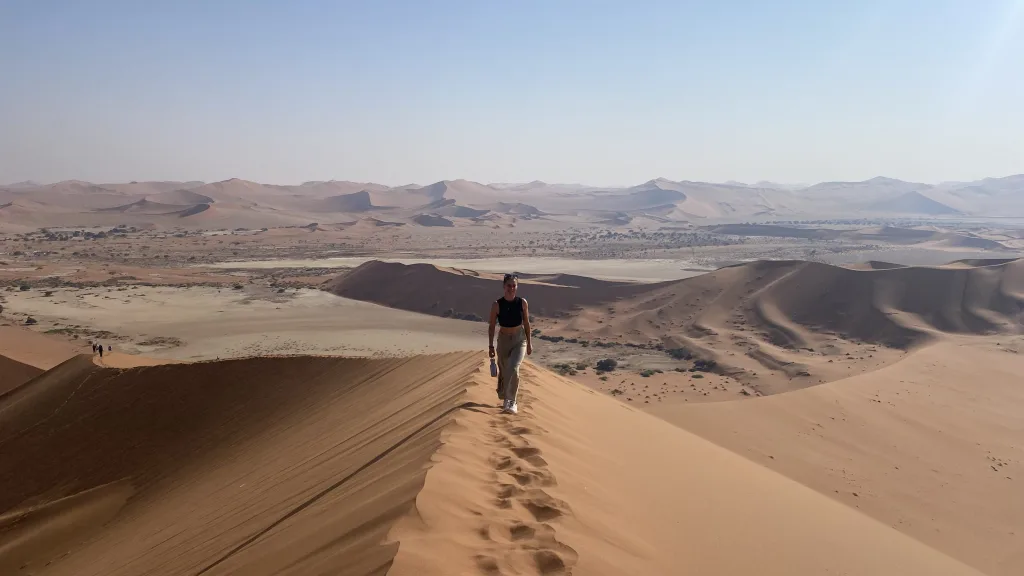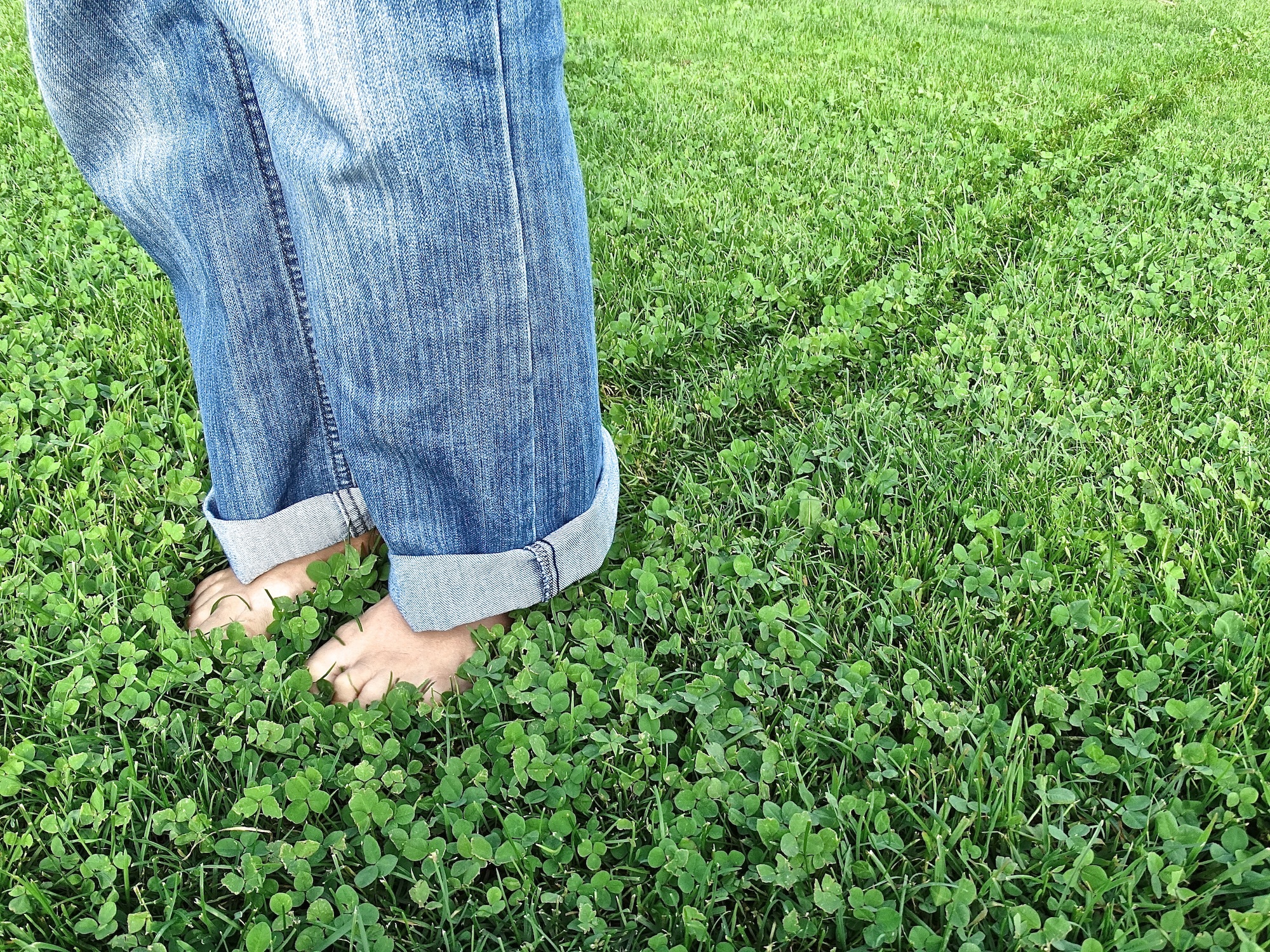We are interested in ideas and studies about connectedness with nature, and we like to share them.
Accessibility to urban green spaces
"Resonating is something you can learn," said Professor Noelle Aarts. Last week, I attended a symposium at Radboud University on the ability to connect with your environment. You make contact when something resonates—for example, when you feel something for a particular tree, a plant, or a landscape. This is something you can practice.
The need for this was evident in the story of Thomas van Slobbe. He has written a new book out of concern that fewer and fewer people are experiencing their environment. This phenomenon is called "the extinction of experience." Thomas attributes this to the "attention economy" and sees it as the greatest threat to nature.
The Dutch organization Jantje Beton recently published a report showing that 416,000 Dutch children between the ages of 6 and 12 never play outside anymore (almost a third). You read that right—never. Bernadette van Heel, a researcher from Nijmegen, mentioned that this doesn't only apply to children, but to adults as well. People are often simply "too busy." Unfortunately, I catch myself falling into this pattern occasionally too.
A week earlier, I was in Rotterdam with colleagues from NL2120. We spoke with young people from Feijenoord. They also noticed that children in their neighborhood are playing outside less and less. I was surprised that many of them expressed a desire for more peaceful public spaces in their neighborhood. They talked about football fields and the last patches of green that had disappeared to make way for new houses. The places where they used to play outdoors were gone. In the Netherlands this is called "infill development"—building within the city instead of expanding at its edges. For years, I thought this was a good idea, to save green spaces at the city's borders. But now I'm starting to think differently. If children no longer play outside, what does that do to their connection—with each other and with their surroundings?
How wonderful it is, then, to hear that research, including that from the Earthfulness Challenge, shows that people can reconnect with their environment in various ways. Opening up public spaces and green areas for children and adults alike should become a priority in housing and area development."
October 2024
Arjan Berkhuysen.
Reconnecting with Nature In Our Urban Lives
Student Anna Hutchings recently wrote a blog about reconnecting to nature in daily life.
"Whenever I feel trapped by the bricks of our modern society, I will start trying to reconnect with the nature around me, not just to help me, but to remind myself to do everything in my power to help the system that we are undeniably part of."
You can click on the link below to read the blog.
May 2024
Anna Hutchings
Earthfulness
Daily short exercise can strengthen nature connectedness!
A recent study by the Center Connecting Humans and Nature at Radboud University shows that daily, short exercises in and with nature can help you feel more connected to nature - even in an urban environment.
In the hectic pace of daily life, many people feel a need to feel more connected to nature. Researchers have written a lot in recent years about how 'connectedness with nature' is not only good for human health, but also for nature itself. A stronger connection with nature goes hand in hand with greater commitment and willingness to take action to protect nature. But how do you increase nature-connectedness? The Radboud University investigated the effect of daily exercises.
Earthfulness Challenge
In 2022, more than a hundred participants were invited to participate in the Earthfulness Challenge and to do a short exercise for 21 days. The exercises were accessible, did not take longer than fifteen minutes and were based on scientific insights about the relationship between humans and nature. The exercises were based on different dimensions of nature connectedness, such as an experiential, emotional or reflective dimension. An example of an experiential exercise is the use of senses, such as listening carefully to birds and walking on grass with bare feet. But there were also exercises that focused more on feelings, such as what you feel about your favorite green spot in your neighborhood, or the loss of nature. Researchers studied the effects using surveys, interviews and diaries.
More intense connectedness through combining different types of exercises
Forty percent of the participants experienced a stronger connection with nature after the challenge and thirty percent showed more willingness to 'give something back to nature'. The research shows that exercises based on different dimensions reinforce each other. A combination of exercises, sometimes focusing more on an emotional dimension and other times more on the reflective dimension, together created a more intense feeling of connection.
Green nearby
Many participants expressed to have busy lives and indicated that they had difficulty scheduling exercises into their daily lives. Participants had a strong desire to pay more attention to the different forms of connection with nature in different types of nature in different ways. According to the researchers, this makes accessible and varied greenery in the living environment highly relevant.
Article: https://www.mdpi.com/2071-1050/16/3/1119
The research was conducted by Bernadette van Heel, Riyan van den Born, Maryse Carbo and Noelle Aarts, all working at the Center Connecting Humans and Nature, Institute for Science in Society at Radboud University.
January 2024
Arjan Berkhuysen
Nature as a Source of Resilience
Arjan recently came across this title in a post by Agnes van den Berg, a researcher and pioneer in the field of 'nature and health.' She co-authored a new scientific article that describes how nature as a source of resilience can be used not only for landscape planning but also for individuals. It details how connecting with nature can aid individuals in times of adversity, such as those experiencing grief. Arjan summarizes the article in a blog.
November, 2023
Arjan Berkhuysen.
“Just going into nature is not enough”, a review of the book “Reconnection”
I enjoyed reading THE book of Miles Richardson's. I say THE book because it feels like this is the book he has been working towards for twenty years. The book is one big plea to take nature-connectedness seriously, as a hope for the future. [Read more]
September, 2023
Arjan Berkhuysen.
Earthfulness and grief
In 2021 everything changed for me and my family. Our son Mees died in an accident on a foggy evening. It was, and often still is, an incomprehensible shock. From that moment we suddenly had to move on with our lives without our son. How on earth can we do that? We are currently learning by trial and error. We have experienced how important rituals, symbolism and art can be in weaving grief into your life. We noticed how walking in nature is helping us. When I started developing Earthfulness, I mainly saw nature as a source of inspiration. I thought of beautiful peak experiences in nature, on top of a mountain or with a surfboard in the sea. But now nature is also a source of consolation and acceptance. Being outside and moving is giving us space and perspective. It takes us out of our heads, making contact with our surrounding.
When I feel connected to nature, 'earthful', the grief becomes sort of more manageable. I don't think the pain of the loss is getting less, but I can handle it better. I wonder why this is the case. [Read more]
May, 2023
Arjan Berkhuysen.
PhD vacancy in Utrecht
It's great to see how the interest for research around nature connectedness is growing fast. Now the Utrecht University is looking for a PhD candidate to explore how the nature connectedness of urban youth can be increased. In this study the focus is on Western as well as Eastern culture. Interesting!
February, 2023
Arjan Berkhuysen.

No more blue skies....
A new article of Smalley & White shows the power of dynamic features like vibrant sunrises and sudden storms when people value a landscape. Structural landscape components such as rivers and lakes, distant mountains, leafy streets, and historical buildings are considered the main features for beauty. The authors provide some of the first evidence to suggest that a similarly significant and quantifiable relationship may also exist with features that are non-structural, like weather and tides. Seeing the dynamics might actually help to highlight the rhythms of the day, seasons, weather, and climate. It facilitates an indirect yet valuable part of human-nature interactions and reconnects people to their surrounding environments. Tourist offices and city planners often show blue skies in their pictures. Maybe it's time to reconsider that approach?
January 2023
Arjan Berkhuysen.
Science for green city planners
A new article of neuroscientist Agnieszka Olszewska-Guizzo suggests which physical and spatial landscape features are supporting mental health in urban green spaces. The researchproject looked into brain activities of 74 people, who were being exposed to 6 different types of landscapes. The results showed for example that landscapes with long-distance views, were causing feelings of comfort and freedom. A bigger variety of plants, having a more 'natural look', were positively associated with the relaxation patterns in the brains. All in all, the studyfindings seem like excellent reading material for current and future landscape- and city planners!
December 2022
Arjan Berkhuysen.
Listening to birds on the toilet
“'Bring nature home to you', advertises a company for a little, rather expensive, device that I recently brought to my toilet. The device reacts to motion. As soon as you enter my bathroom, you'll hear singing birds and a cuckoo in the background. Very cheezy! And fun, at least it made me very cheerful when I bought it during holidays. The idea is not weird, there is scientific evidence that birdsounds do actually support people to relax. I'm not sure whether the device really support reconnecting to nature, but for short moments of cheerfulness during the day it works."
September 2022
Arjan Berkhuysen.
Balcony view
“In the past year I learned there is a lot more nature close by, even when you live in a city like myself. Not only I discovered beautiful parks and dunes, but I also I started making time-lapses of the sky, seen from my balcony. Then I realised that life is like clouds...... it changes every second, but remains memorising & captivating beautiful!"
July 2022
Allard van Dongen Torman.

Gaia - a touring artwork
“Yesterday I was thrilled to see this in the forest. Gaia, is a piece of art by UK artist Luke Jerram, aiming to create a sense the Overview Effect, known as the experience of astronauts feeling awe for the planet and getting a profound understanding of the interconnection of all life when gazing at the earth from space.
Not everyone is feeling this effect right away when looking at the artwork. But the view of the globe in nature is certainly beautiful and a great inspiration for reflection of our connection with the Earth. Gaia is touring around the world, you can find the planning in the link below."
From: Anemoon Elzinga, 17 June 2022

Book - Tree Story, the history of the world written in rings
"I had no idea that so much information on Earth's climate of the past thousands of years and also the rise and falls of ancient cultures have been gathered and explained via tree rings! Valerie Trouet, who researched climate change through counting tree rings has shown a whole world which was new to me. She makes the connection between humans and our leafy neighbors tangible in a way that I started counting the number of tree rings in the wood of our kitchen table."
From: Arjan Berkhuysen, 11 June 2022

Netflix tip - Biggest little Farm
"Heartwarming film about a couple in California who are trying to make their dream of a circular farm come true. They buy a piece of land where the earth is dry and poor because of monoculture farming. Their amazement and enthusiasm is very contagious, you immediately want to The film beautifully shows how everything on this earth is connected and how we are part of nature. It is full of examples of how to deal with so-called pests, predators and even forest fires. to watch with children."
From: Roos Rijcken, 18 February 2022

Interview
"Our first interview about Earthfulness! Down to Earth magazine asked Riyan and me about the background and our intent with the concept. Nice to do. More than 60 people have already signed up to participate in the first test of the Challenge , very nice."
From: Arjan Berkhuysen, 29 January 2022

THEATER
Tree tree
What do you think of me
Tree tree
What do you see
When you look at me
'Plant' is the title of the new album by poet, composer and singer Nynke Laverman.
From: Klaas Sietse Spoelstra, December 2021
More Nynke Laverman: click here

TIP!
"I very much enjoyed reading Suzanne Simard's book. She is well known in the field of forest ecology and explains how her personal life with family and nature developed along with her scientific work. She shows how she discovered that 'mother trees' in the forest take care of their offspring and environment. Simard closes with a simple and meaningful action that anyone can take: find a tree – your tree, and try to connect to her network."
From: Arjan Berkhuysen, 9 december 2021
Tips are always welcome!
Do you want to share your Earthfulness moment, viewing or reading tips? That would be great! Please send your photo or link to: info@earthfulness.org










